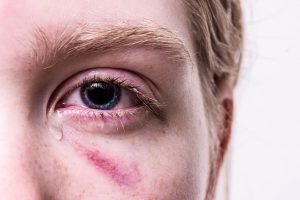With the pandemic caused by the new coronavirus, we ended up acquiring new habits. Most of these customs were restricted to just one environment – our home. Due to the measures imposed to contain the transmission of the virus , we had to do everything, practically everything at home.
 We started to work in our home, we had to exercise in the living room or on the porch, we attended classes at home and socialized with friends, even distant ones, at home – thanks to countless video calls. Do we adapt? Yes, but we know it wasn’t easy. However, the concern here is not about adaptation, but about what these new habits may have brought about.
We started to work in our home, we had to exercise in the living room or on the porch, we attended classes at home and socialized with friends, even distant ones, at home – thanks to countless video calls. Do we adapt? Yes, but we know it wasn’t easy. However, the concern here is not about adaptation, but about what these new habits may have brought about.
According to a report published by the news portal HuffPost, all these new habits were responsible for an influx of eye diseases, which were caused by all these activities that we started to carry out inside our home, basically, in front of a screen.
As stated in the article published by the portal, the specific combination of lifestyle changes driven by the pandemic increased the pressure on our eyes and, therefore, for experts, we are currently living an eye drama. Because of this scenario, ophthalmologists suggest that the time is more than ideal to catch up on your health. doing a simple eye exam.
“The reality is that ophthalmologists’ offices are very hygienic and people shouldn’t be afraid to have their eyes examined,” said Brian Boxer Wachler, a certified Beverly Hills ophthalmologist. “Older people, especially, are at greater risk for glaucoma, macular degeneration and cataracts, which are ‘silent’ thieves of vision, and eye exams can detect this in the early stages.”
 Due to all this new reality, the HuffPost portal listed the main eye diseases that the pandemic helped to foster. Check, therefore, which are the eye diseases to which people are most prone in this pandemic.
Due to all this new reality, the HuffPost portal listed the main eye diseases that the pandemic helped to foster. Check, therefore, which are the eye diseases to which people are most prone in this pandemic.
Myopia
Since the pandemic started, we have found ourselves spending more and more time in front of a computer screen. To meet the needs that routine and work demand, we end up taking few breaks and, even when we try to take a break, we tend to look at other screens (phones, tablets, televisions, etc.).
“All this time we spend in front of the screens can contribute to myopia. Even more so now that people aren’t having enough time to relax their eyesight,” said Juanita Collier, a behavioral optometrist in Connecticut, United States. “And because we’re spending a lot more time indoors, our bodies aren’t getting that important daily dose of vitamin D, which is responsible for slowing the progression of myopia.”
The easiest way to slow down the progression of myopia is to take frequent breaks and follow the 20/20/20 rule: “Take a 20-second break every 20 minutes to focus your eyes on something 20 feet away,” said Collier .
Dry eye
“When we stare at a screen, we blink 30% less than normal,” said Boxer Wachler. “When eyes are open longer, they are more likely to dry out. In addition, the constant use of the mask is also causing some dehydration in dry eye, especially in health professionals, who wear masks for about 40 hours a week, if not more.”
“The frequency of use of the mask is causing dryness in the eye due to the constant flow of exhaled air, which, due to the presence of the object, returns to the exposed eyes”, said Rocio C. Pasion, optometrist certified by Siepser Eyecare, in Wayne, Pennsylvania, United States.
Common symptoms may include: burning, watery eyes, light sensitivity and blurred vision. “To help keep a tear film stable, remember not only to increase the frequency of blinks, but also make sure you blink once for a longer period of time, especially if you’re in front of the computer,” said Pasion .
Increasing your water consumption and decreasing your caffeine intake can also help, as too much caffeine can contribute to tear volume loss. Also, “the omega-3s found in fish oil are excellent for reducing inflammation – one of the main causes of dry eye,” said Collier.
Vision Syndrome caused by screens
Screen vision syndrome is, in short, a group of eye- and vision-related problems that result from prolonged use of a computer, tablet, e-reader, and phone. “The more time you spend in front of the screens, the greater your risk of developing eyestrain, headaches, blurred vision and dry eyes,” said Collier.
“The extent of symptoms in an individual is a result of the time a person spends looking at a digital device screen.” Symptoms usually abate after discontinuing use of the technological apparatus, but some people may experience a continued reduction in visual abilities even after discontinuation.
This is because digital screens make the eyes work harder. Letters, which aren’t as sharp, words and backgrounds, which don’t have enough contrast, glare, and on-screen reflections can make viewing more complicated.
